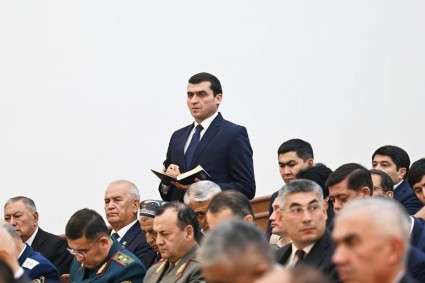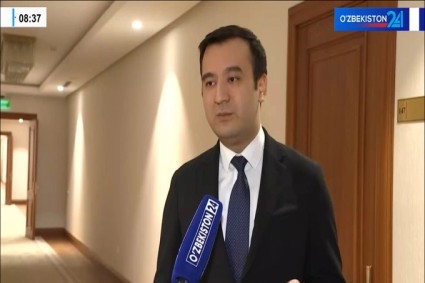Uzbekistan's public debt reached $42.4 billion as of April 1, having increased by $2.22 billion over the first three months of the year, the Ministry of Economy and Finance said in a report.
The public debt to GDP ratio decreased from 35% to 33.5%.
The public external debt increased by $1.83 billion over the quarter, to reach $35.56 billion, or 28% to GDP (was 29.3% to GDP). Debt of $19.74 billion (47%) was attracted at a fixed rate, and $15.7 billion (37%) — at a floating rate. 81% of total debt is denominated in foreign currency.
The public domestic debt increased by $390 million — to $6.87 billion, or 5.4% to GDP (was 5.6% to GDP).
The share of external public debt remained unchanged at 84%, and internal debt at 16%.
In per capita terms, the public debt is at $1,125 (versus $1,070 as of January 1, 2025).
Five years ago, on January 1, 2020, the public debt stood at $17.8 billion.
The remaining debt raised to support the budget reached $16.8 billion is the largest loan item. In the first quarter, loans to finance the budget increased by $1.5 billion.
The energy sector (oil, gas, electricity, coal) ranks second on $5.89 billion. In this sector, the balance increased by $150 million.
However, if we take into account indirect subsidies, the funds allocated to support the budget also partially go to the energy sector.
In third place is agriculture and water management, where the balance increased by $122 million — to $3.04 billion.
The Asian Development Bank (ADB) climbed to the first place among Uzbekistan's creditors, to which the total debt increased by $331 million in the first quarter, reaching $7.75 billion.
The World Bank slipped to second place — $7.45 billion (-$193 million). Next come international investors who provided funds to Uzbekistan through the purchase of issued Eurobonds — $5.66 billion (+$1.53 billion).
Among financial institutions in foreign countries, Uzbekistan owes the largest debt to the State Export-Import Bank and other organizations in China — $3.64 billion (-$127 million), as well as Japan — $3.07 billion (+$181 million).
The currency structure of external debt (which is one of the indicators of the actual risk to the economy associated with changes in the exchange rate) mainly consists of loans in dollars - 65% (was 66%), Uzbek sum - 10% (9%), Japanese yen - 6% (6%), euro - 8% (6%).
At the end of last year, the government of Uzbekistan again did not meet the spending limits, then the parliament raised the limit on external loans. If the law at the beginning of the year prohibited raising more than $ 5 billion under state guarantees, then later this ceiling was increased to $ 7.3 billion. Deputies approved the amendments without questions.
In 2027, the level of public debt may reach $ 55.9 billion, but with 36.7% to GDP level, the growth, according to the Ministry of Economy and Finance, will be "insignificant".
S&P forecasts that gross government debt (including government-guaranteed debt due to close ties to state-owned enterprises) will rise from 33% to GDP in 2024 to a still-moderate 40% to GDP by 2028.
According to analysts, there is a certain risk that non-guaranteed debt of state-owned enterprises, which amounted to about 4.6% to GDP in 2024, could end up on the government’s balance sheet. SOE borrowing has increased sharply in recent years, especially in foreign currency. This money is mainly used to finance energy and infrastructure projects.














